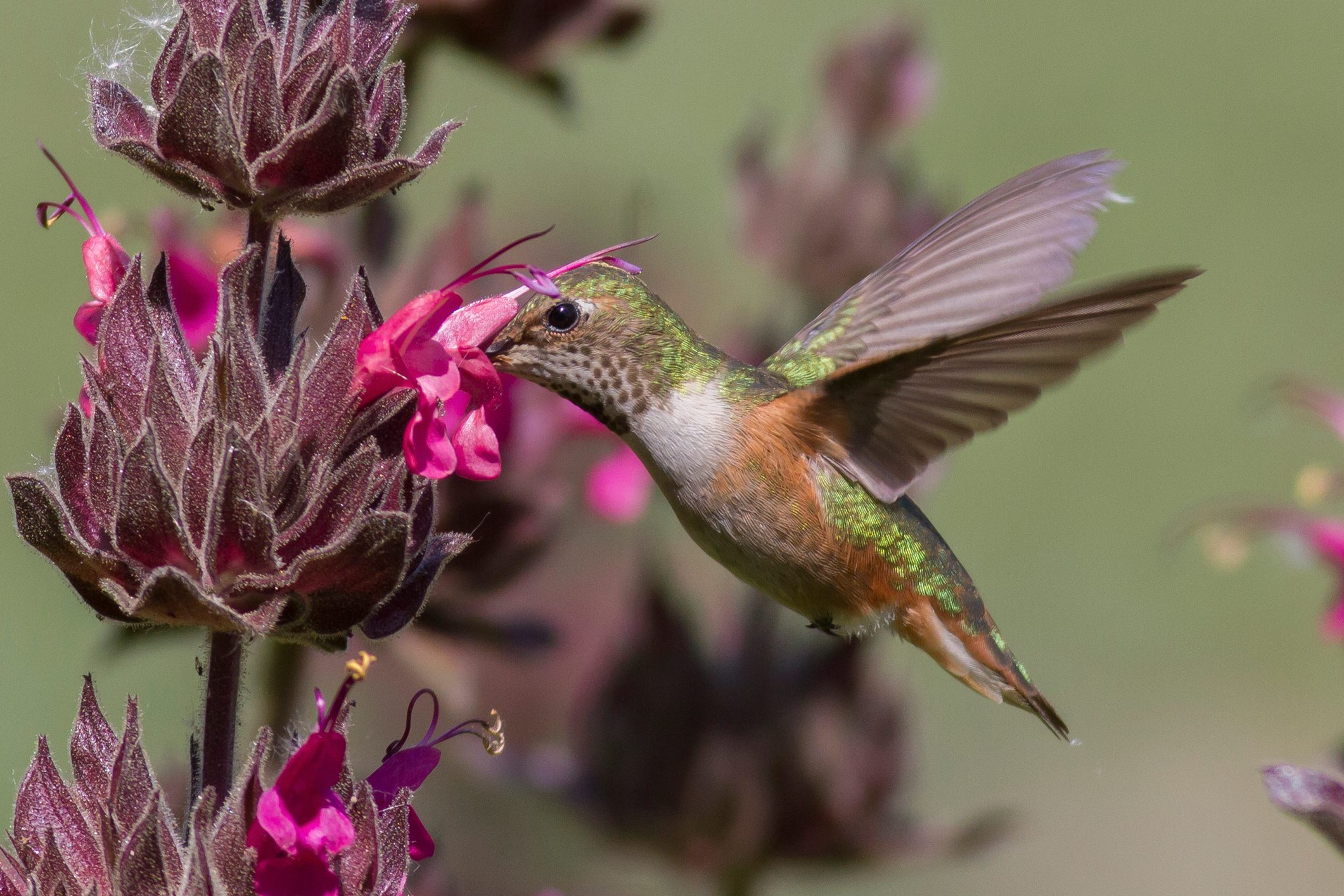Does hummingbird sage really bring in hummingbirds? You bet! Here's how to grow and care for this California native wildflower.

Hummingbird Sage Attracts a Parade of Pollinators

On This Page
Does Hummingbird Sage Attract Hummingbirds?

With the common name of hummingbird sage, you might be wondering…does this plant actually live up to expectations? “Yes! This plant really does attract hummingbirds,” promises Erik Blank, horticultural educator at the Theodore Payne Foundation (TPF), a nonprofit organization dedicated to California native wildflowers and plants.
“It’s the magenta-colored tubular flowers that are so attractive to pollinators and humans alike,” he explains. “The flower stalks rise up several feet off the ground, which allows the hummingbird easy access in the air, moving back and forth from flower to flower. The plant also supports a variety of other garden life: bees, butterflies, caterpillars, and moths. These in turn may attract the animals that feed on them, like birds and lizards.”
Check out more of the best nectar-rich native plants for hummingbirds.
Hummingbird Sage Care and Growing Tips

- Common name: Hummingbird sage, crimson pitcher sage
- Botanical name: Salvia spathacea
- Growing zones: perennial in 8 to 11
- Watering needs: Very low once established
- Exposure: Full sun to part-shade
- Soil: Well-draining
- Size: 1 to 3 feet tall and wide
Psst—these are the top 10 salvias to grow for hummingbirds.
Where to Plant Hummingbird Sage

This wildflower is native to southern and central California, where it grows as a perennial from sea level up to about 2,000 feet in elevation.
Eric says hummingbird sage thrives in dappled light, part sun, or full sun with some afternoon shade. This salvia prefers well-draining soil, and is quite drought-tolerant. “Water once a week during the first year and every two weeks to once a month after that,” advises Erik. “Gardeners in a high or very high fire severity zone can use this ground cover plant in zone 1, aka the Hydration Zone.”
A single plant can spread several feet wide, so make sure it has plenty of space to thrive. Erik also notes that this wildflower spreads underground by rhizomes to create a colony. Over time, you may need to dig up and replant any plant that strays out of bounds. “You can dig up the extras and give them to your friends,” he says. “Free plants!”
This is also a terrific container plant, especially if you’re worried about keeping its spread in check. TPF’s nursery manager, Flora Ito, likes to grow it in low, bowl-style pots.
Don’t miss our ultimate salvia plant growing guide.
When Does Hummingbird Sage Bloom?

Look for the beautiful blooms in spring and summer, with a possible second flush of flowers in the fall. After blooming, cut back the flower stalks and enjoy the lush, fruity-scented foliage.
A member of the mint family, hummingbird sage boasts large lance-shaped leaves most or all of the year in warmer climates. It may go dormant during times of extreme drought, dying back to the ground, but generally springs back when the rains return.
Find out why hummingbirds will flock to a hummingbird mint plant.
Hummingbird Sage Diseases and Pests

“This sage can suffer from powdery mildew, which will appear as white spots on the foliage,” cautions Erik. He notes this is more likely to occur in full shade conditions, or when plants are crowded closely together.
As a wildflower, hummingbird sage attracts many kinds of wildlife. “It’s typical for this plant to get nibbled by crawly things, which can make the foliage appear less than perfect,” he says. Rather than spraying for bugs, he recommends allowing nature to take its course, letting small insects become food for predators like birds. “I suggest that we adjust our understanding of perfection and take this as a sign of an active habitat garden!”
About the Expert
Erik Blank is the horticultural educator with the Theodore Payne Foundation for California Wild Flowers and Native Plants. “I grew up in Southern California, so it’s a lot of fun learning more about the plants and ecosystems I’ve been surrounded by my entire life,” he shares. “I also really enjoy the trading of information that is such a common practice among native plant gardeners. There’s a camaraderie among native plant enthusiasts that is invigorating.”
Sources
- UC Master Gardeners, SLO County – Salvia spathacea
- Calscape, California Native Plant Society – Hummingbird sage





















